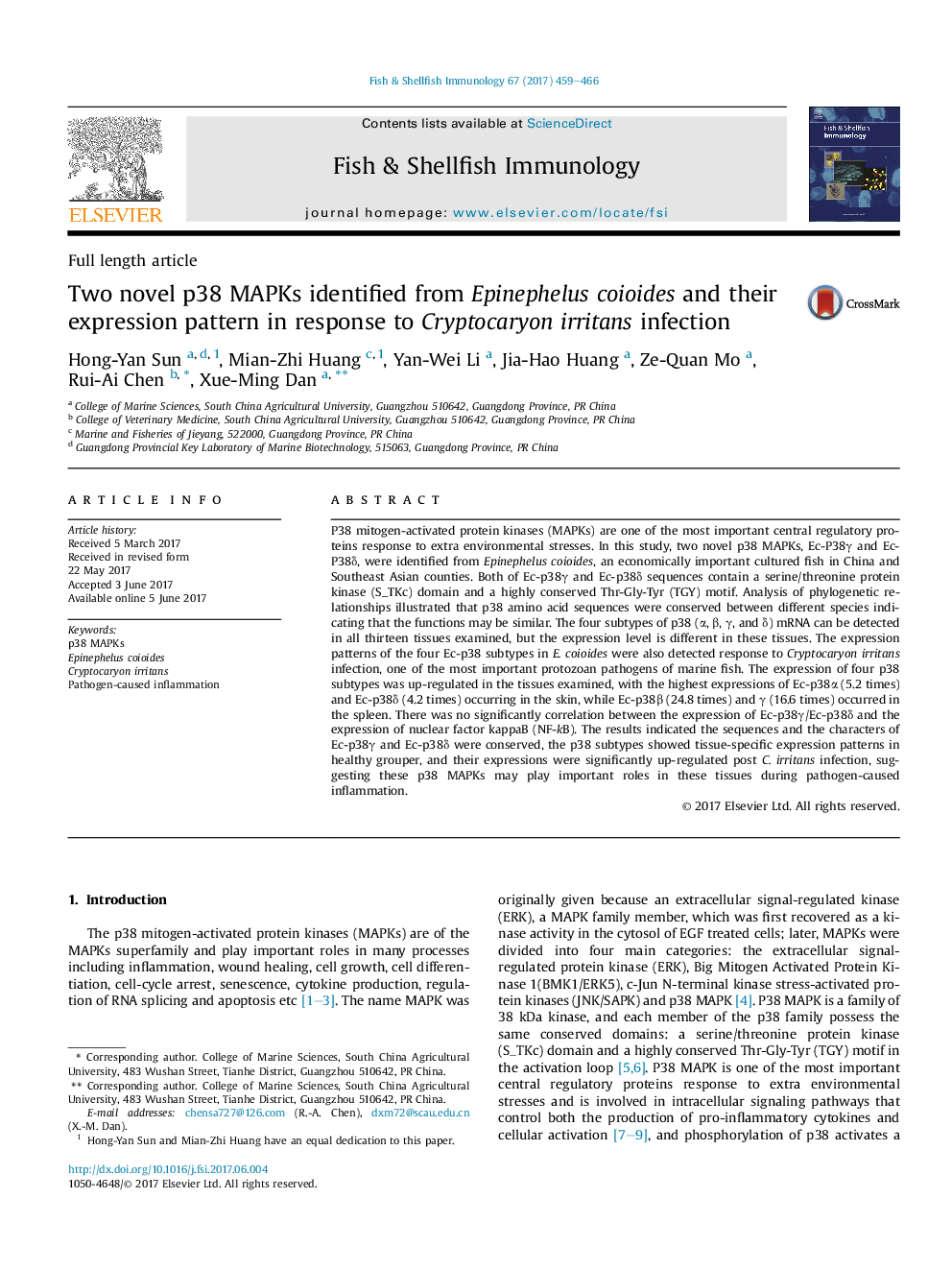| Article ID | Journal | Published Year | Pages | File Type |
|---|---|---|---|---|
| 5540868 | Fish & Shellfish Immunology | 2017 | 8 Pages |
â¢Ec-P38γ and Ec-P38δ genes were identified from Epinephelus coioides.â¢Ec-P38γ and Ec-P38δ were expressed in all thirteen tissues examined.â¢Ec-P38γ and Ec-P38δ were significantly up-regulated response to Cryptocaryon irritans infection.
P38 mitogen-activated protein kinases (MAPKs) are one of the most important central regulatory proteins response to extra environmental stresses. In this study, two novel p38 MAPKs, Ec-P38γ and Ec-P38δ, were identified from Epinephelus coioides, an economically important cultured fish in China and Southeast Asian counties. Both of Ec-p38γ and Ec-p38δ sequences contain a serine/threonine protein kinase (S_TKc) domain and a highly conserved Thr-Gly-Tyr (TGY) motif. Analysis of phylogenetic relationships illustrated that p38 amino acid sequences were conserved between different species indicating that the functions may be similar. The four subtypes of p38 (α, β, γ, and δ) mRNA can be detected in all thirteen tissues examined, but the expression level is different in these tissues. The expression patterns of the four Ec-p38 subtypes in E. coioides were also detected response to Cryptocaryon irritans infection, one of the most important protozoan pathogens of marine fish. The expression of four p38 subtypes was up-regulated in the tissues examined, with the highest expressions of Ec-p38α (5.2 times) and Ec-p38δ (4.2 times) occurring in the skin, while Ec-p38β (24.8 times) and γ (16.6 times) occurred in the spleen. There was no significantly correlation between the expression of Ec-p38γ/Ec-p38δ and the expression of nuclear factor kappaB (NF-kB). The results indicated the sequences and the characters of Ec-p38γ and Ec-p38δ were conserved, the p38 subtypes showed tissue-specific expression patterns in healthy grouper, and their expressions were significantly up-regulated post C. irritans infection, suggesting these p38 MAPKs may play important roles in these tissues during pathogen-caused inflammation.
